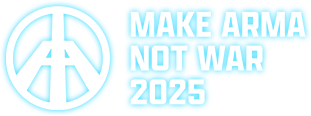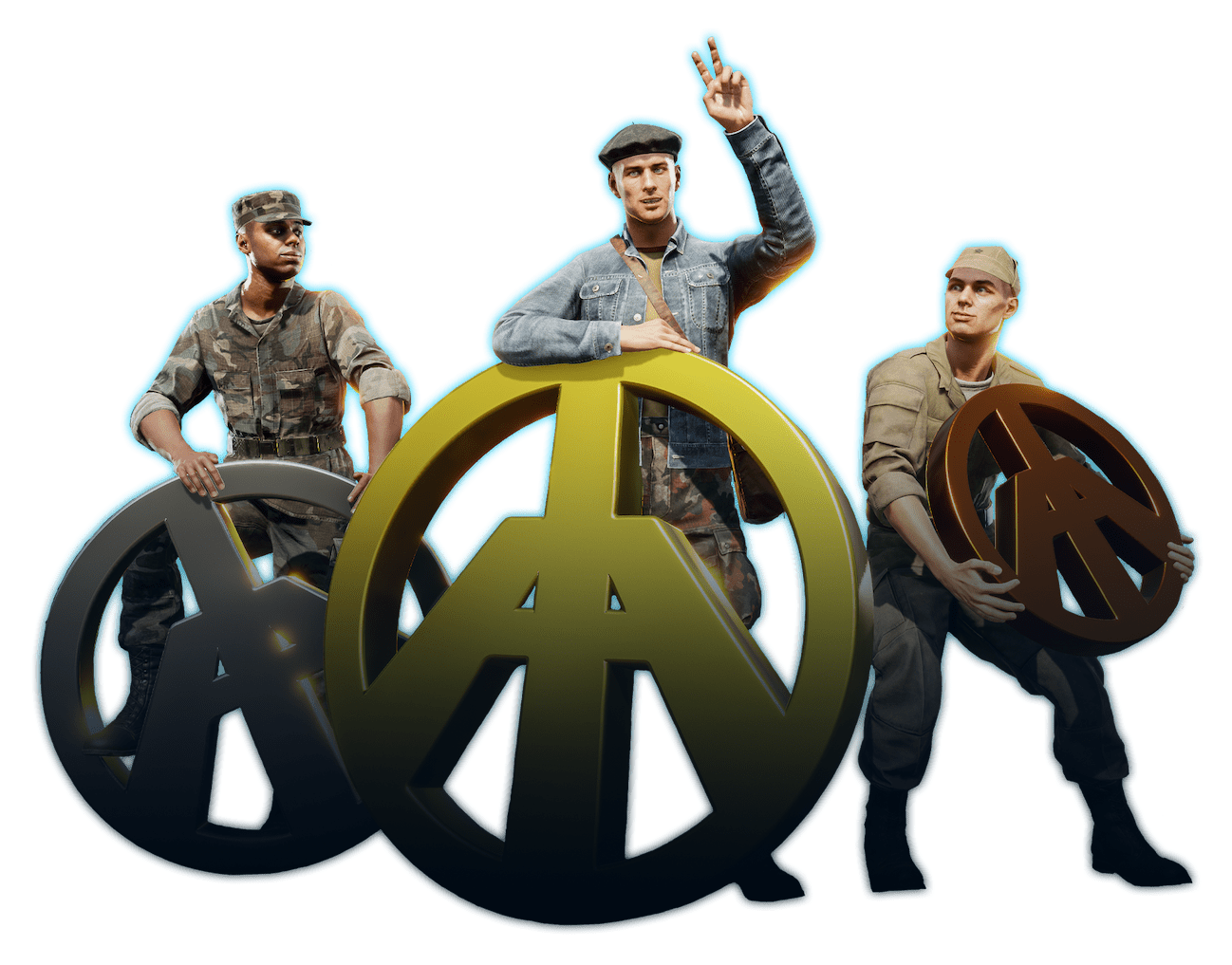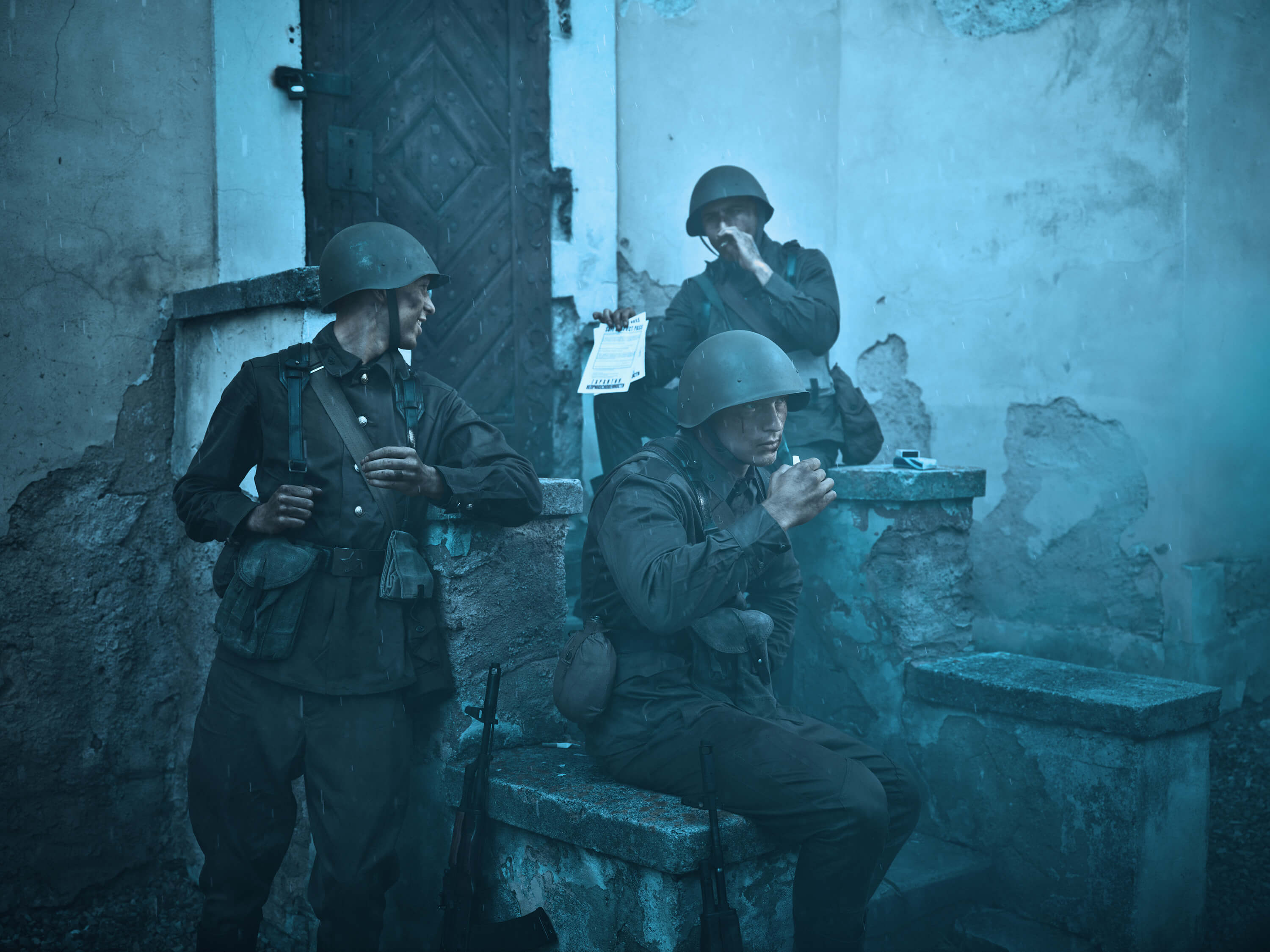Stay in the Fight, Soldier!
Your health is paramount to victory. Staying in the fight for as long as possible keeps you effective, and avoids spending unnecessary supplies upon your respawning. Learn to differentiate between different kinds of wounds, their effects, and how to treat them. Our goal is to help familiarize you with the four core health items in your inventory and other systems in place to keep you battle-ready.

The Four Core Health Items
Tourniquet
An elastic band that wraps tightly around an injured extremity
Dramatically slows bleeding to a near-stop
Applied faster than a bandage
If you're bleeding from multiple injuries, the most heavily bleeding injury is prioritized when using an equipped item (see below)
Limits movement when applied to legs
Affects accuracy negatively when applied to arms
Removing this after applying a bandage will allow the user to move freely again
Can be reused
0.02kg
Bandage (Field dressing)
Stops bleeding
Can also be applied to the torso and head, unlike the tourniquet
Does not restrict movement
If you're bleeding from multiple injuries, the most heavily bleeding injury is prioritized when using an equipped item (see below)
Cannot be reused
0.1kg
Saline bag
Normalizes blood levels over time
Cannot be reused
0.5kg
Morphine Injector
Alleviates pain, reduces weapon sway, and improves visibility
Speeds up the healing process
0.02kg
The order in which these are arranged corresponds directly to the ideal order of use during a catastrophic injury to a limb with severe bleeding involved.
Apply tourniquet to halt bleeding
Use a bandage to stop bleeding altogether
In case of severe blood loss, use a saline bag
Inject morphine to accelerate the healing process
Remove tourniquet to restore mobility
If the injury occurs on the torso, neck, or head we are unable to use the tourniquet, all other steps still apply.
Minor injuries can be treated with only a bandage and/or morphine if the blood loss isn't significant.
All of the above can be self-applied by equipping and pressing R on a keyboard by default (RT on Xbox, R2 on PS5). Applying health items on a casualty can be done by using a contextual menu attached to the injured area/limb of the body. The only difference between self-treatment and treating others is you can be treated by another player while unconscious to prevent further blood loss and speed up the healing process.
Medkit
When placed on the ground, the medkit provides an unlimited supply of bandages and tourniquets. If placed near a supply cache, it can also be used as a source of saline bags and morphine injectors, as these two items do cost supplies.
This tool is a must-carry item for medics on the battlefield.

How to Apply Healing Items
As seen in the video above, some injuries do not require treatment as they're already in the process of healing. That is indicated by the injury icon being blue instead of red in your inventory screen. But if your injuries do require treatment, there are multiple ways of doing so.
Physically using the items
Equip the necessary item in your hand and press R on your keyboard (RT on Xbox, R2 on PS5).
Tourniquets and bandages are prioritized for the most severe injury first automatically.
There is no need to lose sight of the enemy as you do not open the inventory screen.
Using the inventory screen
Here, you see individual injuries as well as your overall status.
Drag and drop the required healing item to an injury for your character to begin treatment.
Once you apply a bandage, you can also use this screen to remove the tourniquet.
You can also click on the injury itself, and a pop-up menu with a selection of available treatments will appear.
In the upper-right corner, you can also monitor your status, such as damaged limbs and blood levels.
In the upper-left corner, you see the effects of healing items such as having a saline bag applied or morphine currently administered.
Healing items can also be self-administered while in a vehicle.
Hospitals & Ambulances
Hospital structures and mobile ambulances accelerate the patient's healing process within the vehicle or the hospital tent. Ambulances also spawn with medical items and can be utilized anywhere on the island. Hospitals, on the other hand, are static and generally tied to a base. Occasionally, you may encounter a player role-playing as an unarmed medic with an ambulance assisting anyone in need. As they are a non-combatant, it is a war crime to harm them intentionally. They are also prohibited from transporting military personnel unless they are patients to the nearest hospital. Check your targets before attacking an ambulance!

Injuries & Wounds
Your wounds and injuries affect what your character can see and do while in combat. For example, bleeding injuries, as the name suggests, drain your blood. Over time, blood loss from injuries will cause your vision to become more distorted, eventually losing color altogether before passing out and dying unless treated with a bandage and a saline bag. Other injuries to specific limbs may also affect your performance. If you fall from a higher-up position, both of your legs may break and slow down your movement. This doesn't necessarily mean you're out of the fight, but your ability to sprint will be gone until your injuries are healed. When your arms get injured, your aiming stability suffers as well, resulting in increased weapon sway. Not all injuries are life-threatening, but all injuries alter your combat effectiveness in one way or another.
Unconscious State
When you get severely injured, you may enter an unconscious state. Your vision will be severely limited, your movement disabled, and your actions will be limited to talking only. In this state, you are unable to perform any healing upon yourself. It is up to your teammates to take care of you. If you haven't lost too much blood, you may eventually regain consciousness on your own to be able to treat your injuries, but act fast, as once your blood levels drop too low, you may pass out again with no way of getting up without help. This is indicated by loss of color in your vision.
Occasionally, you may get knocked unconscious and find no injuries to heal upon awakening. Count yourself lucky, as the bullet intended for your head was stopped by your helmet.
Once you get back up, do not forget to collect your weapon from the ground!
Be Ready! Survive!
There you see, soldier. Staying alive on the battlefield can have a tremendous impact on the success of your mission and a benefit to your comrades. Remember this guide the next time you're in the heat of the battle, and you may even make it out alive and victorious.








